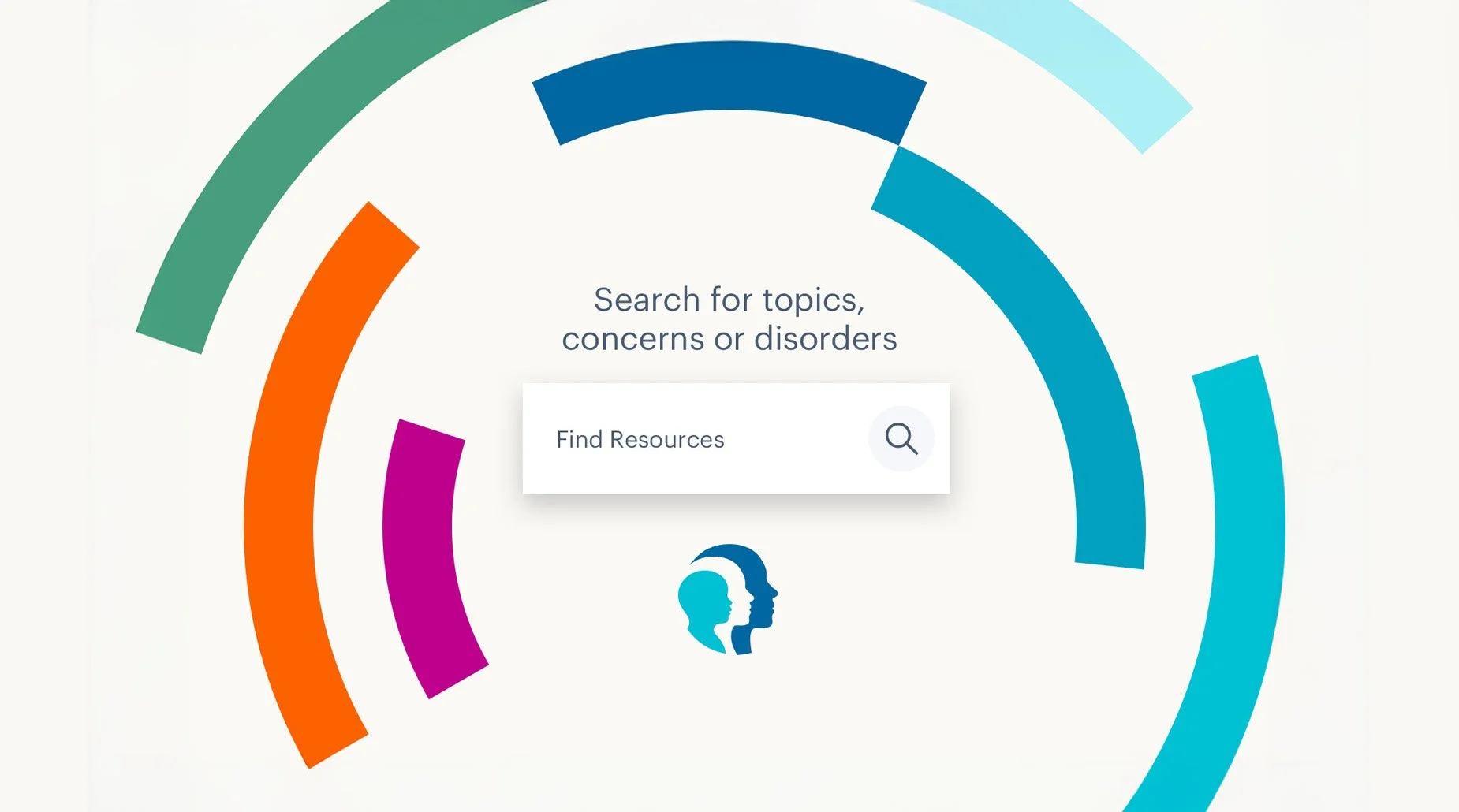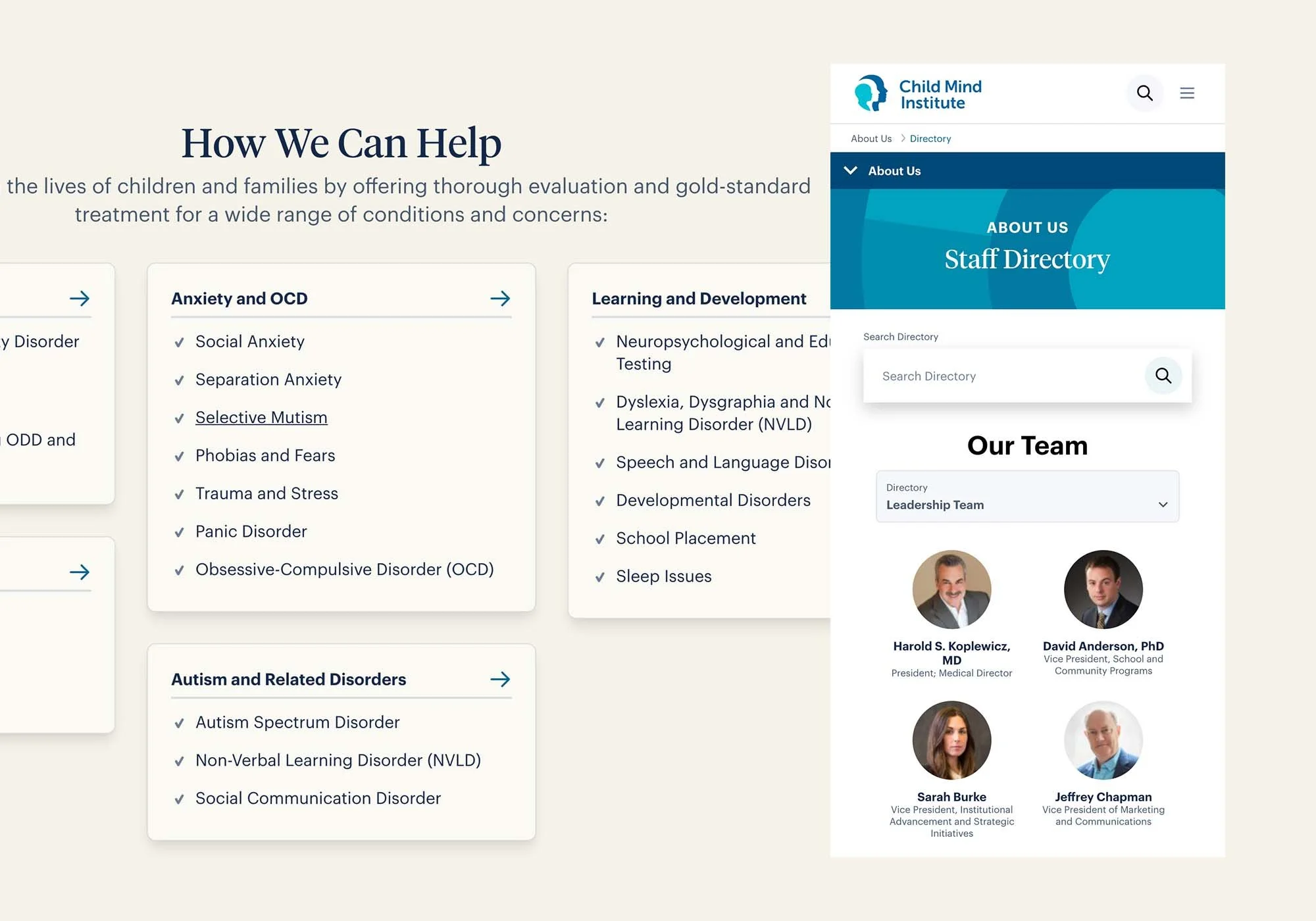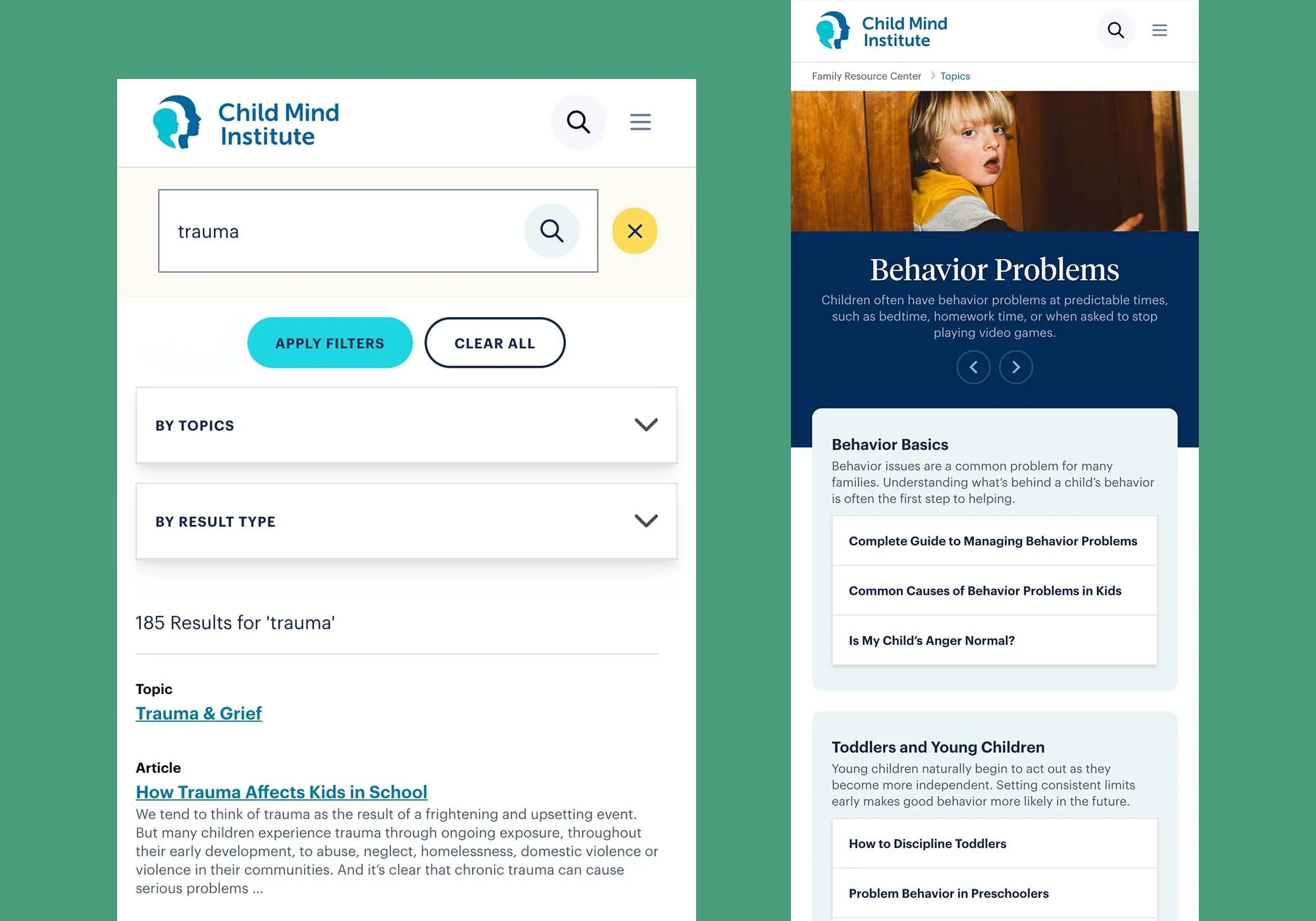Child Mind Institute
Role: Lead UX/UI Designer
Services: Brand Identity Refresh, Website Design
Project Overview
The Child Mind Institute is a leading independent non-profit dedicated to transforming the lives of children and families struggling with mental health and learning disorders.
As the Lead UX / Visual Designer, my role was to overhaul their entire visual brand identity and develop a new accessible Family Resource Center website design.
Child Mind’s previous website structure and content management system (CMS) presented barriers to easy navigation and content discoverability. The project goal was to create a more intuitive and inclusive platform to ensure more families could easily access their over 2,000 existing mental health guides and resources. A key objective was to expand their reach to a wider, more inclusive audience, particularly rural, low-income, and Latinx communities, while encouraging users to take the crucial step of requesting an appointment for care.
Updated Brand Identity and Illustration System: We developed brand guidelines, illustration style, and color system called 'Growth Rings.' This approach effectively expresses emotion while maintaining a rational, bright, and optimistic feel that supports the overall visual brand.
The Strategy: Research-Driven UX & Brand Reinvention
Our approach was deeply rooted in comprehensive user research, testing, and analytics, informing every UX decision. This strategic phase included:
Analytics-Driven Insights: We analyzed current traffic and conversion goals to pinpoint key user behaviors and pain points.
Extensive Content Audit: A thorough audit of over 2,000 articles and guides informed the new information architecture and content migration strategy. We documented existing and new content types and taxonomies in an extensive spreadsheet, ensuring seamless collaboration across client, project, and development teams and saving significant time during migration.
Audience Personas & Journey Mapping: We developed detailed audience personas and journey maps to understand the diverse needs and emotional states of families seeking mental health support, from initial curiosity to actively booking appointments.
Stakeholder Workshops & Interviews: Collaborative workshops and interviews with the Child Mind Institute team ensured the new design principles and strategic goals were co-created and aligned with their vision.
Straightforward Homepage: The Resource Center homepage offers multiple pathways to resources, with a search bar that dynamically transforms into popular topics, a feature highly valued by new users during user testing.
1-Minute Resource Finder: This simple quiz quickly matches family concerns with relevant topics and resources, acting as a crucial entry point for those new to mental health exploration.
Seamless Integration with Clinical Care: A key part of the project was creating natural links between the wealth of resources and Child Mind Institute's direct clinical care offerings. Strategically placed call-to-actions (CTAs) on resource pages encourage interested families to take the next step.
Our content strategy ensures accessibility for busy families: "Bite" (quick 'What You'll Learn' sections), "Snack" (short, broken-down articles), and "Meal" (extensive guides covering topics in depth).
Enhanced Reading Experience: Article and Guide pages feature an interactive table of contents and a progress bar, improving readability. A 'More Like This' sidebar enables manual curation of related content for continued user engagement.
Key Outcomes: Amplified Reach & Unprecedented Engagement
The new Child Mind Institute website, launched in September 2021, has been widely praised and has delivered significant, quantifiable results:
Increase in Appointment Requests: New and returning users are 486% more likely to visit the Request for an Appointment form, directly translating to an increased number of conversions for clinical care.
Expanded Reach to Spanish-Speaking Audiences: The site experienced a +14.9% increase in visits from Spanish-speaking users, demonstrating enhanced inclusivity and broader reach.
Significant Organic Traffic Growth: Organic traffic jumped up to a +33.15% Year-Over-Year increase after the redesign, indicating strong SEO performance.
Increased Resource Engagement: The Family Resource Center main page and Topics now have approximately +67% more page views than before, with Articles experiencing an +18% increase in page views.
Faster User Experience: Page load times improved by 31%, contributing to better user satisfaction and SEO.
Improved Donation Conversion: The site saw a significant +39.88% Year-Over-Year improvement in Donations conversion rates, showcasing the impact on fundraising.
Award-Winning Recognition: The Child Mind Institute website was honored as a 2022 Webby Awards Honoree for Charitable Organizations/Non-Profit Websites and Mobile Sites, acknowledging its excellence in design and impact.








